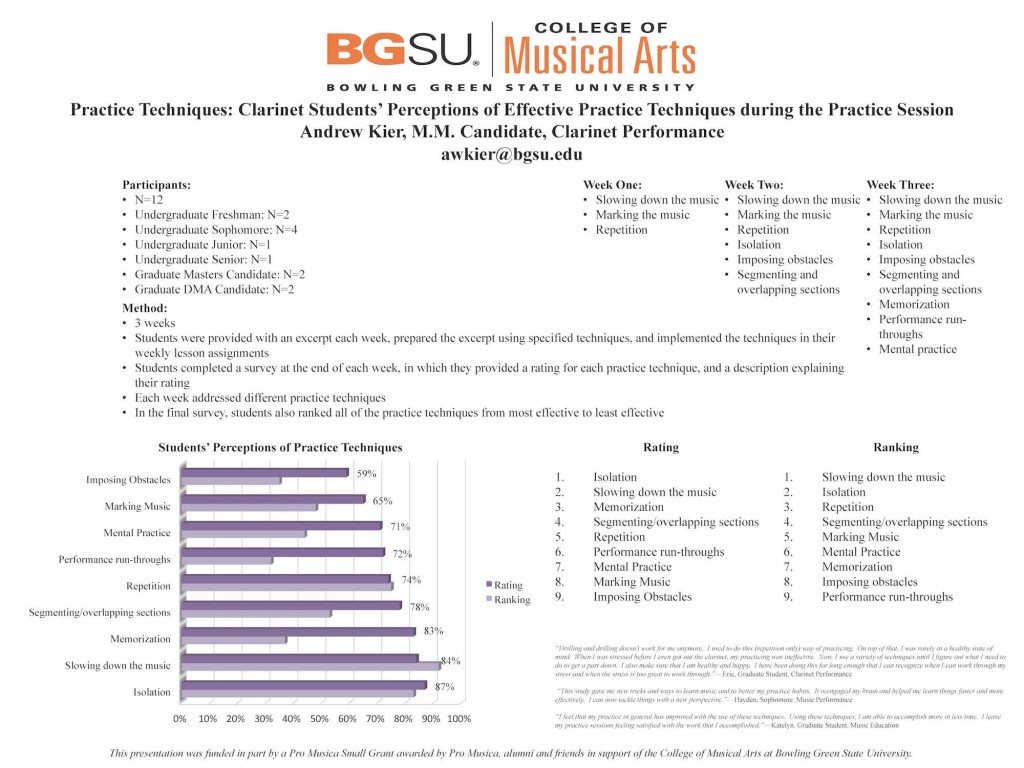Andrew Kier attended the annual Texas Music Educator’s Association Convention in San Antonio February 11-14, 2015. He presented research about effective practice techniques.
Abstract:
The purpose of this study is twofold: a) to determine what practice techniques clarinet students perceive to be effective during the practice session and b) to provide music educators with insight when teaching students how to practice. A total of twelve clarinet students served as the participants for this study: two undergraduate freshman, four undergraduate sophomores, one undergraduate junior, one undergraduate senior, two masters students, and two doctoral students.
Participants were provided with an excerpt each week for three weeks and were asked to prepare the excerpt and lesson assignments using specified techniques each week. Week one consisted of slowing down the music, marking the music, and repetition. Week two consisted of slowing down the music, marking the music, repetition, isolation, imposing obstacles, and segmenting and overlapping sections. Week three consisted of slowing down the music, marking the music, repetition, isolation, imposing obstacles, segmenting and overlapping sections, memorization, performance run-throughs, and mental practice.
Analysis of the data indicates that there are discrepancies between some techniques’ ratings and rankings. When rating the effectiveness of the practice techniques, participants considered each technique on an individual basis. However, when asked to rank the techniques, participants considered the techniques as a collective whole. For example, memorization appears to be an effective practice technique from the perspective of participants’ ratings. However, from the perspective of participants’ rankings, memorization appears to be less effective. The results for memorization and performance run-throughs indicate that participants’ perceptions are inconsistent, and this increases the importance on consistency when using these techniques. Participants’ perceptions also indicate that when combined the use of isolation, slowing down the music, and repetition are more effective.


